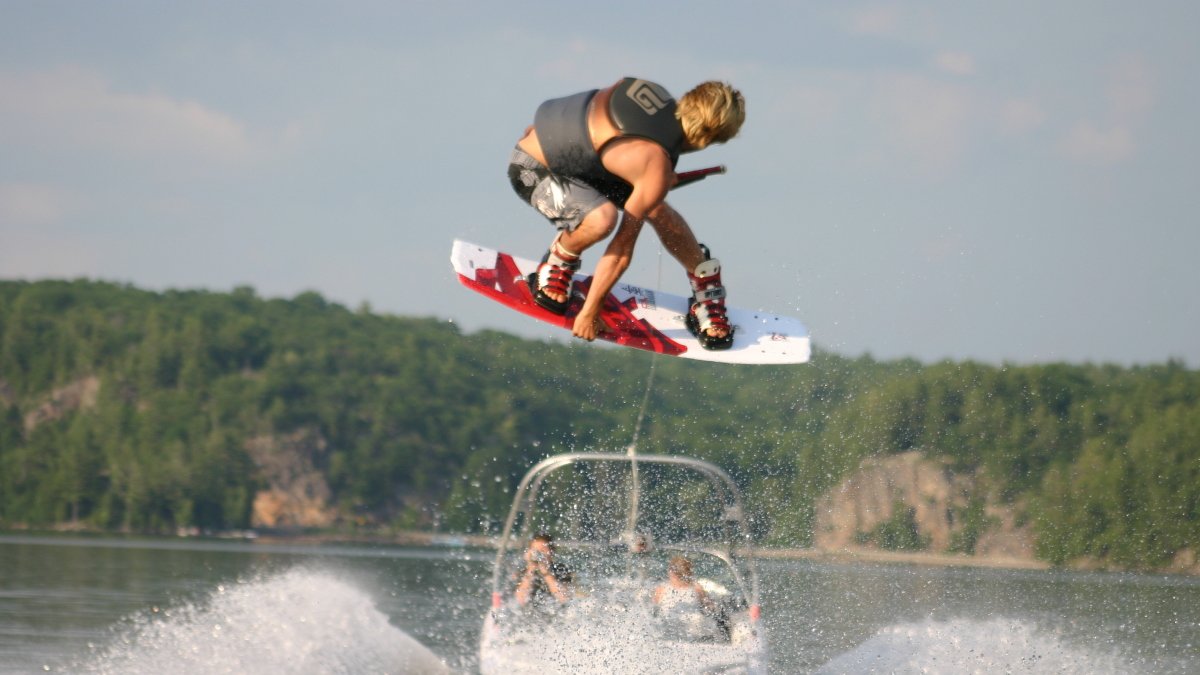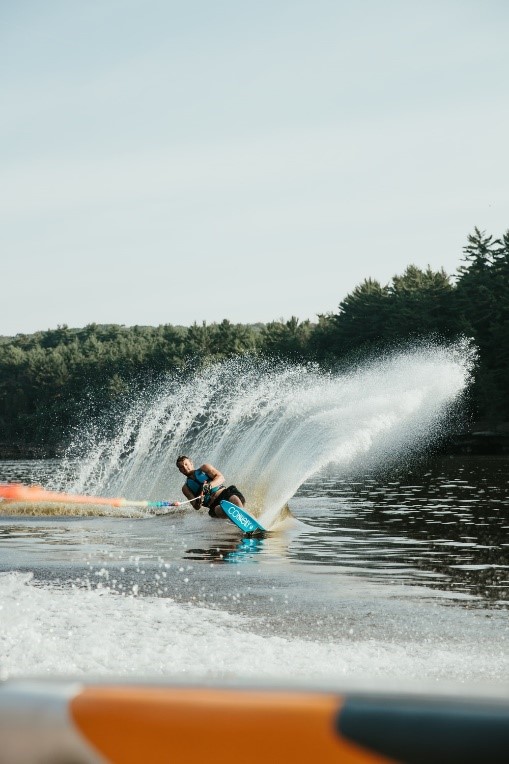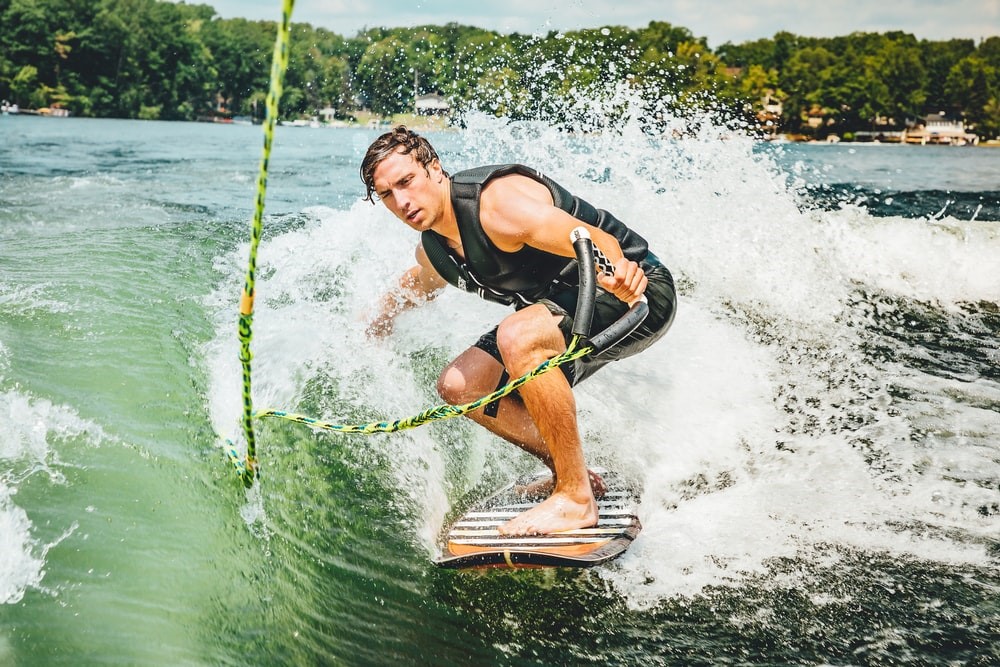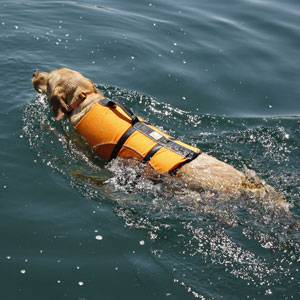If you currently like to water ski and are thinking about starting to wakeboard, or you wakeboard and want to get into water skiing, you might be wondering what the differences are between water skiing vs wakeboarding.

Here is a quick table to show the differences between the two water sports:
|
Wakeboarding |
Water Skiing |
| Wide snowboard-like board |
Slalom ski/twin skis |
|
Towed behind a boat |
Towed behind a boat |
| Surf-like, sideways stance |
Front-facing stance |
|
Easier to learn if you have board sport experience |
Easier (dual skis) for those with no board sport experience |
| Lower boat speed (19-22mph) |
Higher boat speed (26-34mph) |
|
360 tricks, aerials, flips, wake jumping |
Slalom racing, high-spray turns, wake cutting |
| Harsh faceplants. Asymmetrical but mellow body workout |
Strong workout. Heavy shoulders and arms pull. |
|
65-foot static rope, wakeboard tower, ballast bags, V-drive |
75-foot rope with a little stretch, direct drive |
In the debate between water skiing vs waterboarding, there are many similarities because they’re both tow sports and cut across the wakes created by the boat. However, the learning curves and skills required, the kind of workout they provide, and the equipment you need are very different.
Table of Contents
Water Skiing vs Wakeboarding: How Are They Different?
Both water sports involve hydroplaning on a board while being towed by a boat.
When you wakeboard, you’re on a board that looks like a snowboard. It’s as wide as a snowboard and has similar foot bindings. Generally, your feet will stay bound to the board even after falling.
However, with water skiing, you’re on a pair of skis – or one ski if you’re slalom skiing. For two skis, you will attach each foot to a ski. Only your front foot is strapped in on a slalom ski, and your back foot is tucked into a strap behind your front foot.
Your feet are perpendicular to the wakeboard like they would be on a snowboard or skateboard. In water skiing, when you’re using two skis, your feet are facing forward and are parallel to each other – just like snow skiing.
When you water ski on a slalom ski, you ride with one foot in front of the other. This might sound like a wakeboard, but it’s different because the board you’re on is much narrower, and both of your feet are forward-facing.
Wakeboards can cost anywhere between $200-$500, twin skis fall between $150-$300, and slalom skis can run between $300 and $1,500.

Water Conditions and Boat Speed
When you wakeboard, you’re typically going at slower boat speeds than you would for water skiing: 19-22mph for wakeboarding and 26-34mph for water skiing.
A water skier tries to put as much tension on the tow rope as possible to put up a wall of water behind them. On the other hand, wakeboarders don’t put as much tension on the tow rope and instead focus on tricks and jumps.
Glassy, smooth water is ideal for tow sports, but it’s even more critical for water skiing than wakeboarding – especially for slalom skiing. It can be easier to wakeboard in water that isn’t as calm, but it’s more challenging for water skiing.
How to Get Up: Water Skiing vs Wakeboarding
For most riders, getting up on a wakeboard is much easier than a slalom ski because of the width of the board and the amount of contact the board has with the water.
Also, having the option for a deep water start for wakeboarding gives you more time to come up and out of the water than with the fast start on a slalom ski.
When comparing wakeboarding to twin water skis, the jury’s still out on which one is easier. Some riders find that water skiing is easier because you don’t have to angle your body sideways after getting up out of the water.
After getting up out of the water in wakeboarding, you have to angle your hips sideways to get into position. For some riders, this doesn’t feel natural.
When you have two skis, you must deal with the skis being wobbly and moving away from each other. Kids will have an easier time getting up on a wakeboard than a water ski.
Generally, those with board sport experience will pick up wakeboarding faster than water skiing.
Water Skiing vs Wakeboarding: Which Is Harder on the Body?
For casual riding behind a boat, wakeboarding is easier on the body than slalom skiing. Even when you do tricks and jumps during a boarding session, it still puts less strain on your body.
Performing perfect turns on a slalom at a high speed is an incredible feeling, but it does require strong skills and can be harder to learn than wakeboarding.
However, wakeboarding has its own challenges. One of them is the harshness of a faceplant when you fall.
Even though you typically ride at slower speeds when you wakeboard, catching an edge and falling can still give you a headache. Wakeboarding falls also hurt more than water skiing falls.
As mentioned above, wakeboarding puts less stress on your body because of the lower speeds and the greater contact surface, resulting in a gentler pull on your shoulders and arms. For most people, the stance for wakeboarding is more natural than the slalom ski position, which is also less stressful to your body.
However, wakeboarding can make your body work asymmetrically with the rotation in your back and hips because you ride in a natural position most of the time.
Learning to ride switch while wakeboarding can reduce the strain on your body.
Injury Risk
According to a study done in 2010 in the Journal of Sports Science Medicine, the injuries most associated with wakeboarding are neck and head injuries – mostly dislocations. The injuries most associated with water skiing, in contrast, primarily involve lower extremities and the hips – mainly strain or sprains. Abrasions and contusions are common in both water sports.
The risk of serious injury because wakeboarding is half of what it is for water skiing.
Slalom skiers can often fall on their ribs with an arm extended while trying to execute a turn and dislocate a rib or cause bruising on their ribs.
Skills and Tricks

Wakeboarding is about doing tricks and jumping the wakes created by the boat, while water skiing is about cutting hard across the wake and spraying water.
Water skiing is different. Slalom ski racing has become popular, which is exactly how it sounds: you race through a slalom course to see who’s the fastest. Other water skiers will do acrobatics-style performances on skis.
Bottom line
Comparing water skiing vs wakeboarding is easy because while both are tow sports, they are different disciplines.
Wakeboarding is done at lower speeds on a wider board with a surf-style, sideways stance. It mainly involves tricks and jumps that are comparable to skateboarding and snowboarding.
Water skiing mainly involves fast turns across the water. While there are other types of water skiing that people will do (i.e., slalom racing), water skiing is mostly about spraying as much water as you can.
There are several differences between water skiing and wakeboarding, and hopefully, this article has helped sum up those differences for you.


